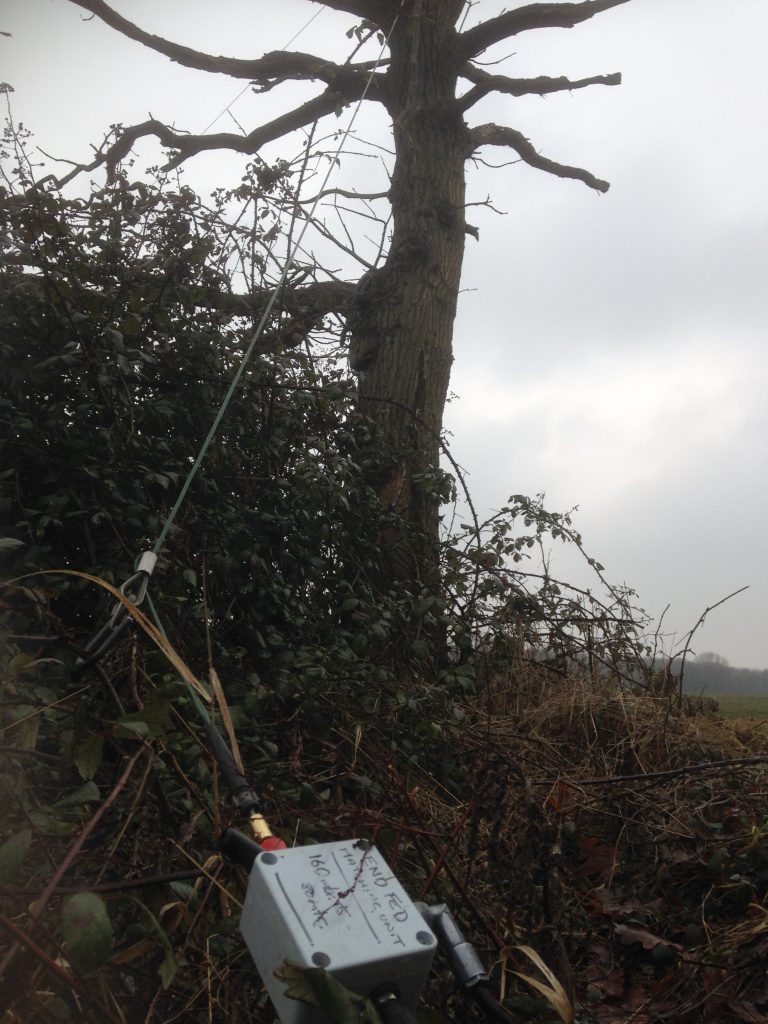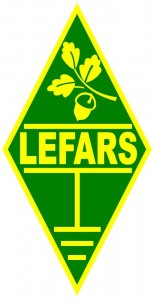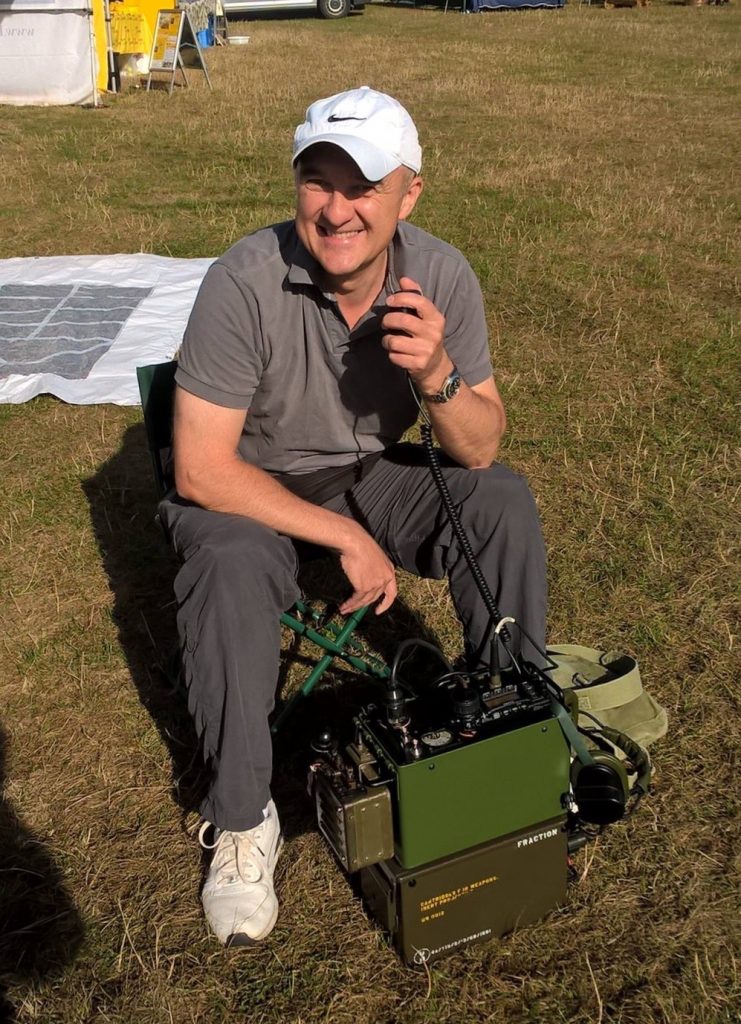 THE YAESU 857 ‘M’ – A ROBUST PORTABLE STATION – DEVELOPED BY DAVID COLES – M0IDF
THE YAESU 857 ‘M’ – A ROBUST PORTABLE STATION – DEVELOPED BY DAVID COLES – M0IDF
I developed my /P station around the Yaesu FT-857D. It’s a terrific choice for portable use being small, capable and offering higher power levels than alternatives such as the Yaesu FT-817 whilst offering all the bands and modes of larger base station radios.
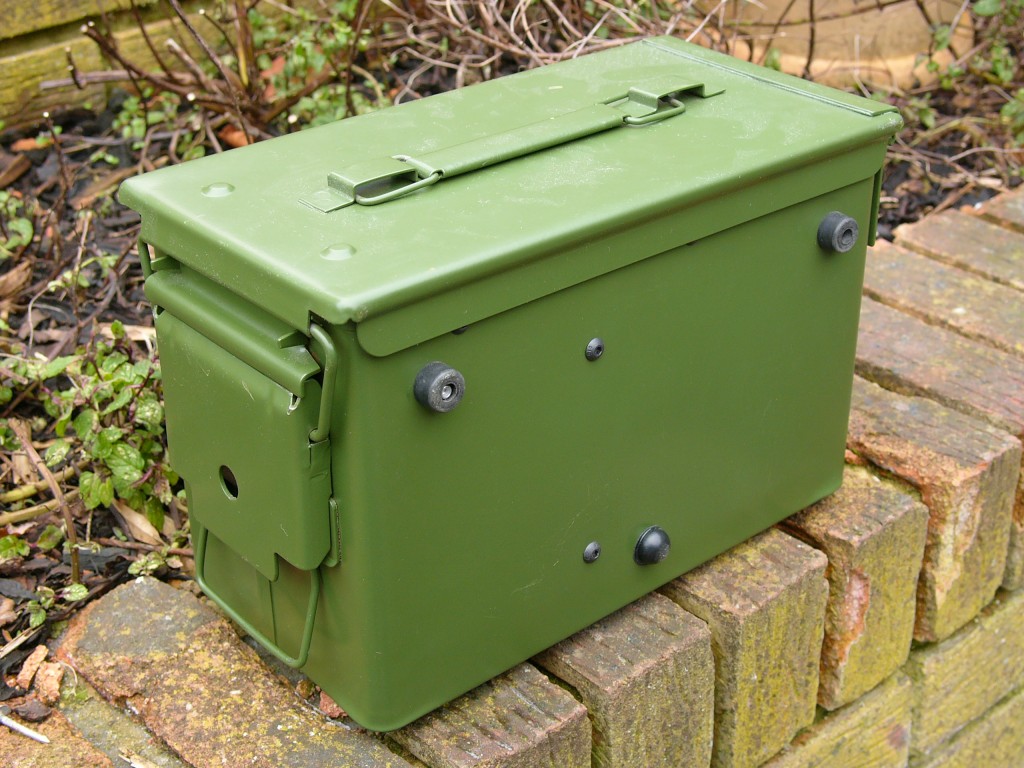
Taking sensitive electronic equipment into the field clearly carries the risk of damage through accident and exposure to the elements. I needed to protect the radio, provide power and facilitate connection to ancillaries i.e. aerials, microphones, CW keys and headsets. The solution was to base construction around the very tough, waterproof and widely available NATO ammobox above. The box contains the ‘857 whilst another houses a battery and all cables. I can “grab and go” portable with these two boxes in seconds. In fact, I like the package so much it’s in semi-permanent use at the home QTH too! Let’s have a look in side:
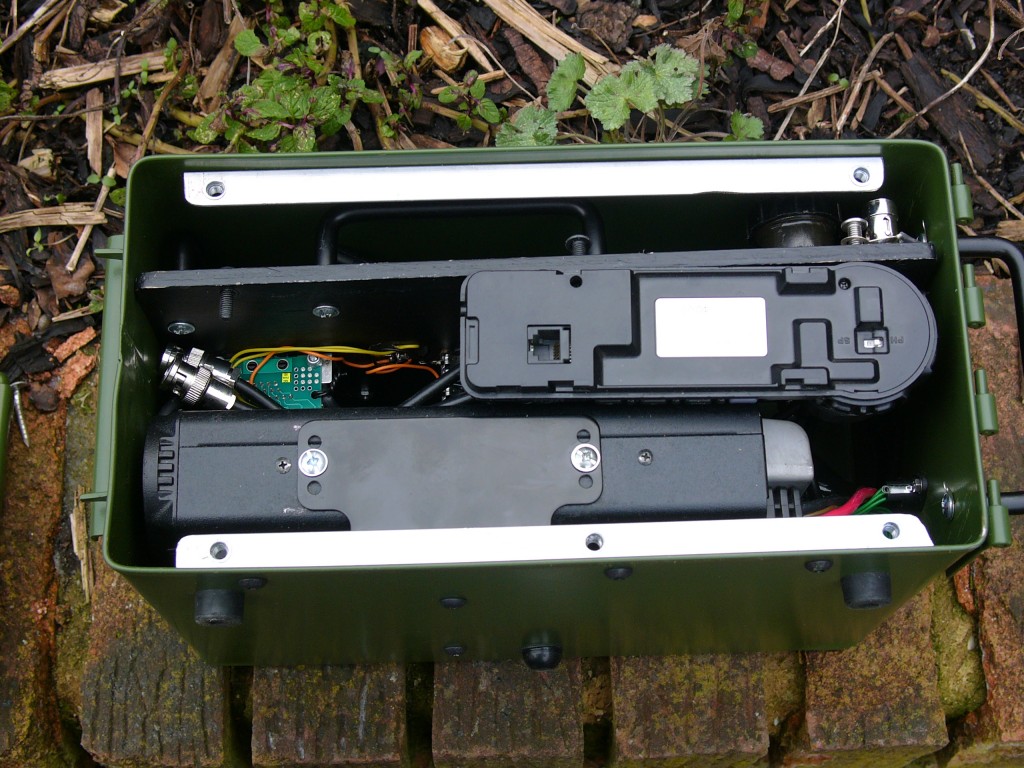
The base unit, head unit and front panel are stored securely in a watertight case – foam packing of the head unit not shown.
The unit can be assembled in 2 to 3 minutes and looks like this. Given my love of vintage green radio I couldn’t resist the inclusion of the meter from a Wireless Set No.19 in the design. It provides measurement of battery voltage, signal strength and SWR using the relevant menu option from the 857.

Here’s the battery box. All connecting cables are stored in the case. Battery capacity is 14Ah comfortably giving 6 or so hours use dependent upon power and mode. I generally operate portable with a max of 30W on SSB which I find ample to get heard.
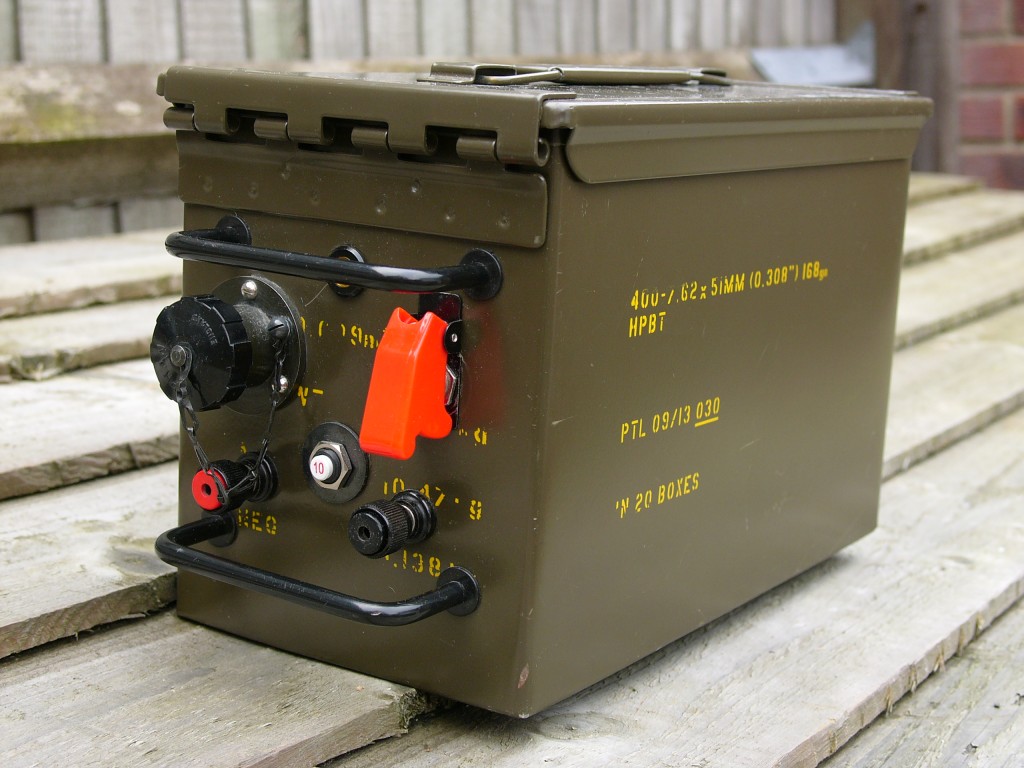
Inside the battery box – the output can be 6 or 12 volts, useful as I have some 6volt equipment:

The two units together:

The radio can also operate with an internal battery rated at 7Ah. It’s good for 3 to 4 hrs of operating depending upon modes and duty cycles (ratio of receive time to transmit time). When used without the separate battery box the radio can be mounted to a back pack frame and carried into the field.
A quick note about ventilation. If the intention was to run the 857D at higher power levels than I use (25W SSB / 5-10W FM) the ammo case would need to be vented to prevent the base unit overheating.
I recently expanded the capability of the package by adding a data socket to the case work allowing WSPR and PSK operations using a data router and small laptop.
Moving to the aerial my portable activities with the ‘857 are almost always on HF for which my preferred antenna is the EFHW – the End Fed Half Wave. This can be configured as an Inverted L, Inverted V or Sloper with the assistance of a tree or lightweight fishing pole. In comparison to a conventional dipole the EFHW doesn’t require a long run of coax to a central feed point and more conveniently can be fed at ground level close to the operating position. My choice of wire comes in the form of an ex-British Army “Clansman” kevlar reinforced wire bobbin pictured below. I can operate from 10m to 80m with the single bobbin by simply reeling out the required length (a half wave).

Feeding a half wave at the end does require a means of matching the high impedance of several thousand ohms to the 50 ohms required by the radio. I constructed the matching unit below for this purpose. Note the use of BNC socketry as they are considered more weatherproof.
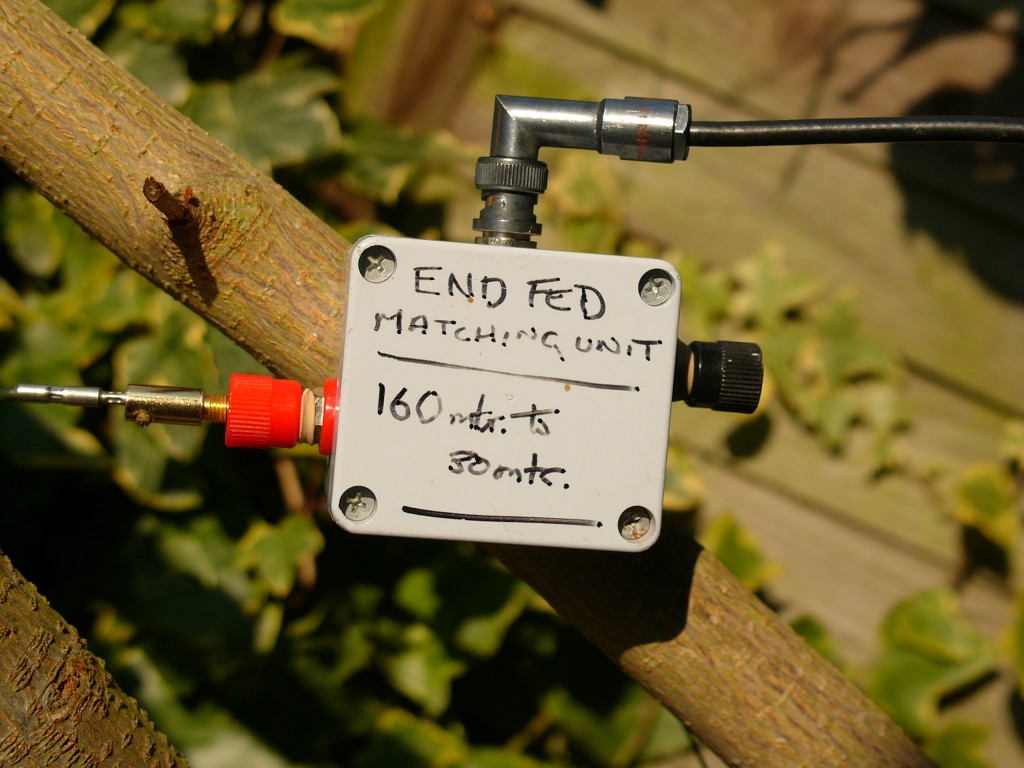
Finally, here’s a pic of the station in use in the field with the end fed half wave wire aerial thrown over a tree branch…and Orla the photographer’s dog!
Good DX hunting and 73’s
David – M0IDF

